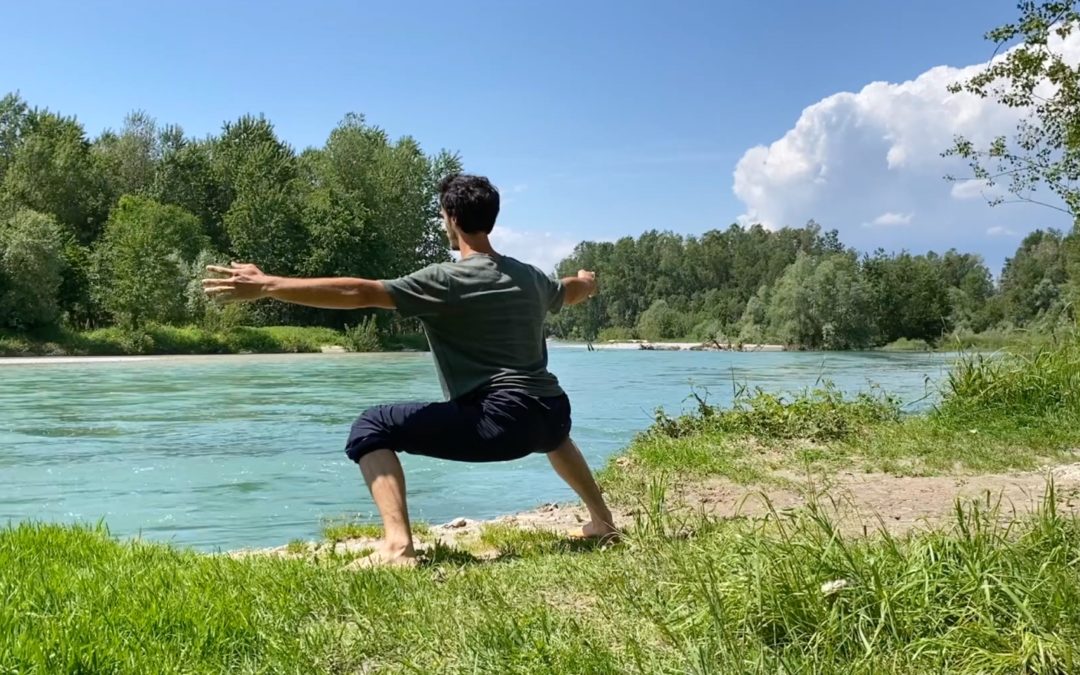
How to face an endurance based challenge
I have been asked many times about a protocol to apply during an endurance-based movement challenge. So here is one of my favorites that can be used in a wide range of situations: from a long swim to a run, to a max isometric position hold to a hang, from a climb to a long balancing bout, from height to cold exposure and …well you get it.
Let’s get into it:
Preparatory stage
First step, rehearse
Don’t visualize far lands, but study what you are about to face.
Make sure you rehearse in your mind’s eye what will be needed from you. Understand exactly what the hard bits of the challenge are going to be, what crux you are going to have to face, which weak links are going to come knocking at your door. What will be under your control and what not. Which strategies you are going to have to apply, how to optimize hand / feet placement, which coordination to use. Understand what will most likely work and try it out in smaller chunks where and if possible. You want to leave the least amount of unknowns hanging around in your near future. To conclude, give yourself positive reinforcement. Bring your mind to those past experiences that built your skills, have full trust in your preparatory training, check in and self-talk to your inner core to reassure yourself about success. There should be no doubts left at the end of this process, your mind should feel steady like the fire of a candle without wind blowing on it.
Once this is done (and trust me, take all the time you need with this) move on and put this all aside.

Second, achieve relaxation
In the moments before the storm, you want to create stability.
You need to have a replicable set up, a home base. A situation where everything is under control and can be achievable every single time. Start from generating a pattern of breathing that will set a carbon dioxide baseline, gather nitric oxide, lower your heart rate and balance your nervous system. I recommend going for a continuous 1:2 / inhale:exhale without any pause in between. It has to create very little air hunger, but no discomfort. Slow down the breath to 6 breaths a minute or less. You want it to be diaphragmatic alone and take the air in through the nose. Make it non-forced, light, with a slow cadence, and deep (80% of max). At the end of this process, you want your body to be in a deep hybrid state, alert and ready, but at the same time but with a slow pounding heart. Your mind should feel calm, empty, steady, sharp, and determined. As per Zen saying you should feel like you stopped stirring the “mud in the cup”, and that the water in it clears up.

Action
Third, focused attention
Get the engine going, don’t allow your stress levels to rise.
The best way to do this is to direct your attention to all the microscopic actions you are sequencing and their response over the body. Be a perfectionist, moment after moment.
I.e. Did you just enter cold water? Feel the effect over your body. How did it respond to it? what is happening to your breath? which sensations are raising or falling inside your system? Just be with whatever comes, without acting on them.
Or another example: did you just start a climb? How do your holds feel? Is your body tensing up excessively? Can you place your next step softly? Can you feel your connection run through your system?
Take all the information in, then decide how to act, from a clean place.
Never allow yourself to wonder on the ifs, on what will come next, or on what could go wrong.
That pertained to a previous stage. Stay grounded in the present.

Fourth, cold blood
Start cruising steady, focus, and get ready for the emergencies.
Breathing shall remain soft, slow, and with a slightly longer exhalation than the in.halation. I.e. 2 in 3 out. In case you encounter a harder situation to manage I recommend switching to a 1:1 in:out ratio, with the inhalation coming in through the nose and the exhalation coming out of your pursed lips. Make it strong and sharp. This regular rhythm helps setting the pace of your actions and gives a firm clarity of intention.
Once the hard moment is concluded, go back to your “cruising mode” to calm yourself down once again.

Fifth, conclude with style
Maintain elegance in the end, regardless of how tired or shocked you are.
Don’t drop down like a sack of meat. Come out of it with grace. Make every step soft and attentive. If you feel you can’t control yourself anymore because you reached your limit, remember you most likely still can. Even fainting can be done with style (I saw it happen). Acknowledge how fatigue stirs your actions towards sloppiness and how it pull the hand break over your system. This is a protection mechanism but you don’t have to follow it; it’s just some laziness coming to visit.
Ask yourself, can I still walk upright? Can I still maintain touch? Can I still keep my back straight? If so why wouldn’t I?

The aftermath
Sixth, Recovery and download
This is your time to absorb the experience and upgrade.
Take three recovery breaths with a small hook at the top: inhale deeply from the diaphragm then wide to the side into the intercostals, then the chest, once full pause a couple of seconds, exhale deeply and empty completely. Then take a few moments to observe your state, what went on and download all that just happened.
Only then address the people around you, the situation, and the rest of the reality around of you. Give time and respect where it is due.
Good luck on all the findings, challenges and experimentations. May your hearts be calm, your minds be focused and your lungs be steady.
Until next time,
Marcello.

Recent Comments